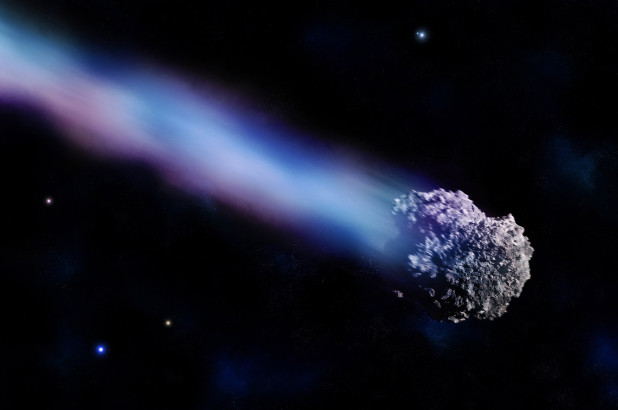Astronomers have reportedly discovered that a large object moving from the outer reaches of the solar system will approach as close as Saturn’s orbit in the next decade.
Source: The New York Post
The comet, known as 2014 UN271, was first discovered by the Dark Energy Survey (DES) – an international collaborative project started in 2013 that is listed as working at Chile’s Victor Blanco Telescope and was founded with the purpose of mapping galaxies, detecting supernovae and uncovering mysteries about dark energy.
The discovery was announced on June 19, using data from the NASA-funded Minor Planet Center’s Minor Planet Electronic Circulars (MPECs).
According to scientists on social media, the hunk of rock and ice has an estimated diameter of around 130 to 370 kilometers.
Some qualified 2014 UN271 as the size of a small dwarf planet, though Harvard-Smithsonian Center for Astrophysics astronomer Jonathan McDowell questioned that analysis.
“Seems like maybe a tad too small to qualify as dwarf planet?” he wrote on Twitter. “Very cool nevertheless.”
An image of the Trans-Neptunian Object (TNO) posted by University of Pennsylvania astronomer Pedro Bernardinelli showed a large, white and pixelated blob, which he said was comprised of several DES images taken over a period of years between 2014 and 2018.
The “mega-comet’s” orbit has been updated a few times, but is extremely long – hundreds of billions of kilometers from the sun – and takes approximately 600,000 years.
“Based on the given absolute magnitude and given how exceptionally red it looked in 2014 precovery images from CFHT (the g – r color was 0.9 and r – i was 0.5!) I would estimate at an albedo of 0.01-0.08 a diameter of 130-370 kilometers (nominally 160) which puts it on a similar scale, if not larger than, Sarabat’s huge comet C/1729 P1 and almost undoubtedly the largest Oort Cloud object ever discovered- almost in dwarf planet territory!” Sam Deen, a citizen astronomer, said in a post on the Minor Planet Mailing List (MPML) forum.
“I have little doubt in my mind that as this gets closer to the sun, it will begin displaying the coma and tail typical of every other object yet seen in its orbit,” Deen wrote.
Deen noted that, based on its magnitude, 2014 UN271 will be “impressively bright” – though The Weather Channel pointed out it will be “impossible” to see without a telescope – before it hurls back into the dark sky.
Source: The New York Post

































Leave a Comment
You must be logged in to post a comment.